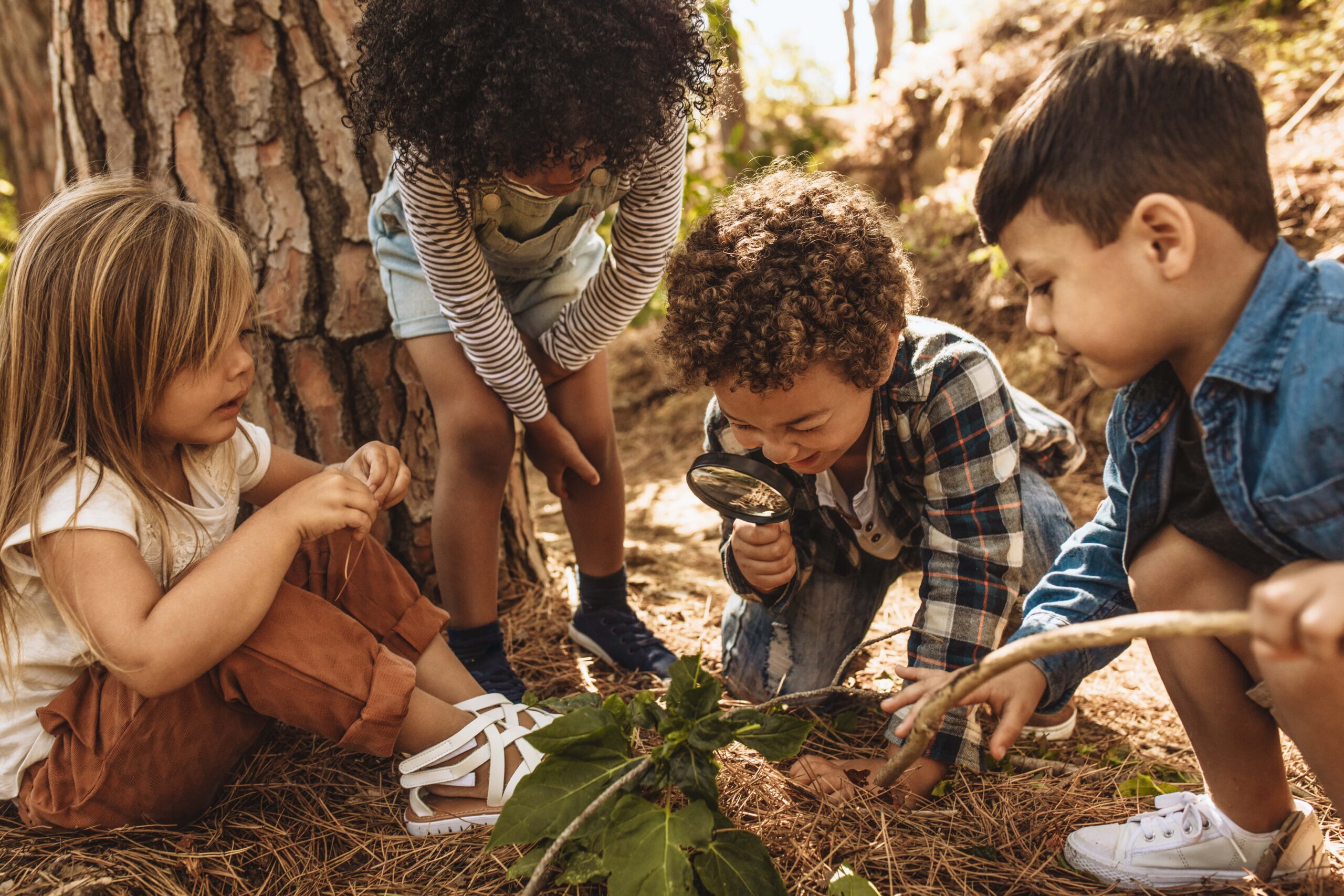8 insights into the role of nature in children’s wellbeing

Photo by Jacob Lund from Shutterstock.com
What is the role of nature in children’s learning and development, and how are schools around the world connecting children to nature? In this episode of Teachers’ Voices, educational researcher Nina Alonso spoke to four specialists in nature-based education to find out how they use the natural environment to improve children’s wellbeing and learning outcomes.
Here are eight highlights from this packed episode on the role of nature in children’s wellbeing:
- Scientific research shows disconnection with nature has a negative impact; this is known as Nature Deficit Disorder. Listen.
- Children learning in classrooms that face green spaces, even those with access to a small window, have better outcomes. Listen.
- You can simulate the effects of being in nature when you don’t have access to green spaces. Showing images and bringing soundscapes of nature into the classroom can inspire conversations and creative projects that have a similar impact. Listen.
- The TiNi, or Children’s Lands, methodology gives children a natural place of their own to nurture. This space could be anything from a few pots to several acres. Listen.
- There is an official process for schools to recognise Mother Earth and formalise her importance in education. It includes signing a contract to hire Mother Earth as a teacher, displaying an image of Mother Earth alongside photos of teaching staff, and creating a Mother Earth classroom where all lessons must be planned with the aim of helping children to create a better world in mind. Listen.
- Schools that connect to nature and flex the curriculum based on what is happening in the natural world help children find joy in the school environment and result in better learning outcomes. Listen.
- The REAL learning philosophy is a model for connecting education to nature, with a focus on educating for a sustainable future. Listen.
- Relationships – Building relationships helps us to learn
- Experiential and involvement – We learn best when we are hands-on and creative
- Authentic – We connect learning to the real world, prioritising sustainability
- Local to global – We start local with a view to making a global impact.
- The shift to a nature-based education builds an understanding of how we connect to the world around us, building compassion through integrating mind, body and heart in learning. Listen.
Keep up to date with the newsletter.
